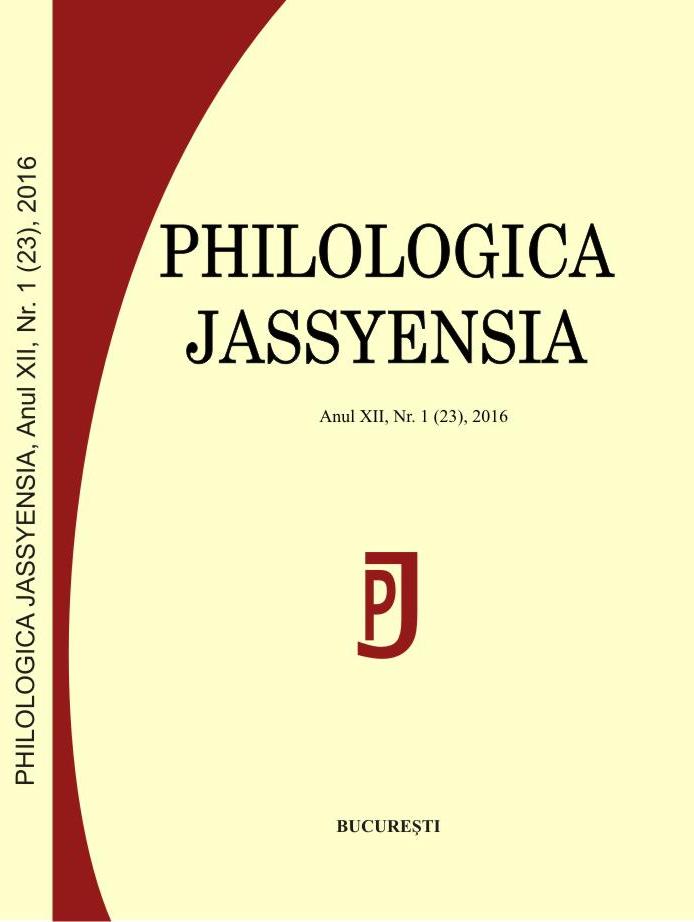O etimologie complicată: ciorchine
A difficult etymology: ciorchine ‘bunch’
Author(s): Victor CelacSubject(s): Language and Literature Studies
Published by: Editura Tracus Arte
Keywords: etymology; lexicography; diachronic semantics
Summary/Abstract: In this paper, the etymology of the Romanian lexeme ciorchine is treated. The meaning of this word comprises the following significations: „1. Group of flowers or fruits, disposed alongside a main axis with numerous ramifications, raceme. 2. The fruit of the vine, grape.” To this end, the primary (textual and dialectal) and secondary (lexicographical) attestations are reviewed; the earlier etymological solutions proving to be unconvincing, an etymological hypothesis is proposed and maintained.We consider that the word ciorchine is derived from the substantive ciochină „the back side of the saddle”, with the following semantic evolution of the significations: „strap or bunch of straps on which one can hang different objects at saddle” > „bunch of hanged objects” > „bunch, as related to different parts of plants: reed, hemp, corn”, concomitantly with the apparition of the [r] type ciorchină etc. – and its attaining the specialized significations „inflorescence; bunch of grapes”. The data we rely on for our hypothesis are:– the difference in attestation of the word ciochină (attested in Romanian in 1502) as compared to the [r] type, ciorchină (first attested in Romanian in 1832); – the occurrence of ciochină in Romanian in a series of phrases and proverbs and the development of a great number of derivatives (ciochinar, ciochinare, ciochinuţă, ciochinea, ciochinete); – the existence of intermediary meaning and formal links: ciochină „inflorescence”, and possibly „fir cone”, ciorchină „saddle bow”;– the presence in regional Atlases of attestations containing ciorchină, ciorchin etc., with meanings such as „the axis of the grape cluster, without grapes”, which we consider to be analogous with the meaning „bunch of leather straps on which one can hang different objects”.Essentially, the evolution from ciochină „part of the saddle...” to ciorchine „inflorescence; bunch of grapes” might be construed as a process of re-semanticizing or passing of the word from an onomasiological field to another one: from the terminology defining „the horse” to that pertaining to „parts of plant”. During the industrial period, the horse and the harness pieces implicitly lost their importance to the common man (with the exception of horse racing). Thus, one is confronted with the diminishing of the importance of the customs related to horse utilization, combined with the linguistic creativity factor (which operates ceaselessly). One is also inclined to consider that one of the causes contributing to the decline, almost the abandonment of the older type, without [r] (ciochină), from the terminology related to horses, might have been the apparition of the newer type, with [r] (ciorchină), which has rapidly strengthened its position within the language by ranging itself within the terminology „parts of plants”. One can cite similar representative situations, such as the „splitting” of [l] in [rl]: the original type călan (augmentative for cal „horse”), scăfălie, ciocălie, dolog – are actually unknown in Romanian, often having different meanings as compared to the evolved type: cârlan, scăfârlie, ciocârlie, dârlog.
Journal: Philologica Jassyensia
- Issue Year: XII/2016
- Issue No: 1 (23)
- Page Range: 15-32
- Page Count: 18
- Language: Romanian

